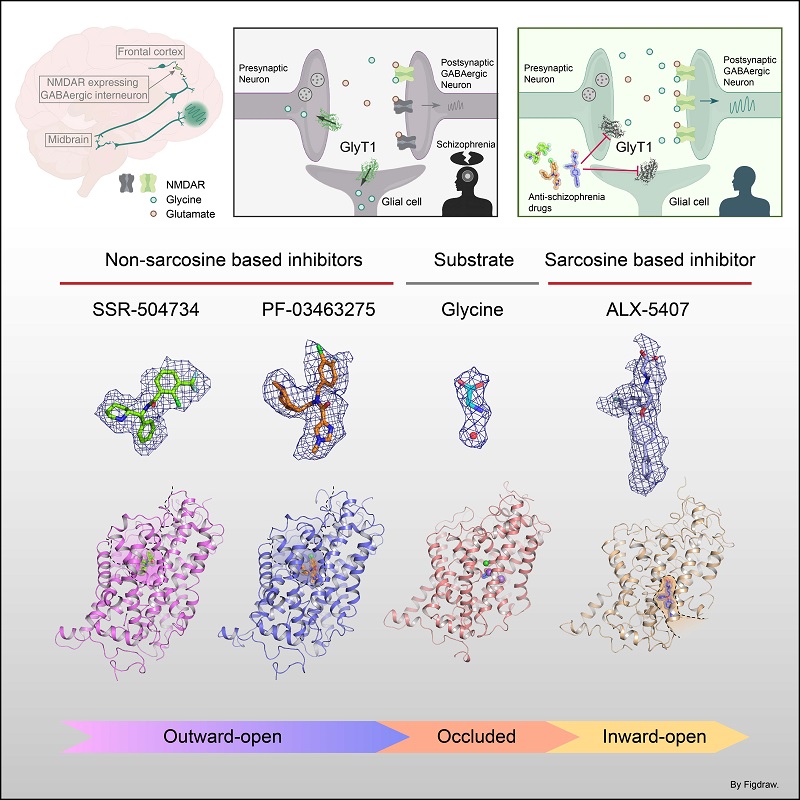Scientists Reveal Inhibitory Mechanism of Anti-schizophrenia Drugs
Schizophrenia is a highly disabling mental disorder, and numerous studies have shown that the hypofunction of the NMDA receptor is one of its pathogenic mechanisms. GlyT1, a glycine transporter protein, is highly co-localized with the NMDA receptor. Inhibiting GlyT1 can increase the glycine concentration in the synaptic cleft, indirectly promoting NMDA receptor activation. Therefore, GlyT1 is considered a key target for treating schizophrenia.
In a study published in Cell on March 20, a research team led by Prof. ZHAO Yan from the Institute of Biophysics of the Chinese Academy of Sciences has elucidated three different conformations of the full-length wild-type GlyT1 transporter in human, firstly providing the elucidation of substrate recognition and the mechanism by which three anti-schizophrenia drug candidates selectively inhibit GlyT1.
Researchers reported the structure of GlyT1 with glycine bound in an occluded state , while identifying the binding sites of a chloride ion and two sodium ions which were co-transported with glycine, elucidating the coupling mechanism of substrate and ion binding during transport.
Currently, the clinical candidate drugs targeting GlyT1 for treating schizophrenia can be classified into sarcosine-based and non-sarcosine-based classes. The researchers found that the initial lead compound ALX-5407 of the sarcosine-based inhibitors binds in an inward pocket of GlyT1. They also identified the first patented non-sarcosine-based inhibitor SSR504734, and the drug PF-03463275, which is currently undergoing phase II clinical trials, to bind in an outward pocket of GlyT1.
This study explores the substrate recognition, ion binding, conformational transition of GlyT1, and the structure-activity relationships with the clinical trial drugs. It will help accelerate the drug development process targeting GlyT1, providing strong theoretical support for the design and development of anti-schizophrenia drugs.

Figure. The molecular mechanisms of GlyT1 in physiology and pharmacology
(Image by ZHAO Yan's group)
Article link: https://www.cell.com/cell/fulltext/S0092-8674(24)00228-9
Contact: ZHAO Yan
Institute of Biophysics, Chinese Academy of Sciences
Beijing 100101, China
Email: zhaoy@ibp.ac.cn
(Reported by Prof. ZHAO Yan's group)

